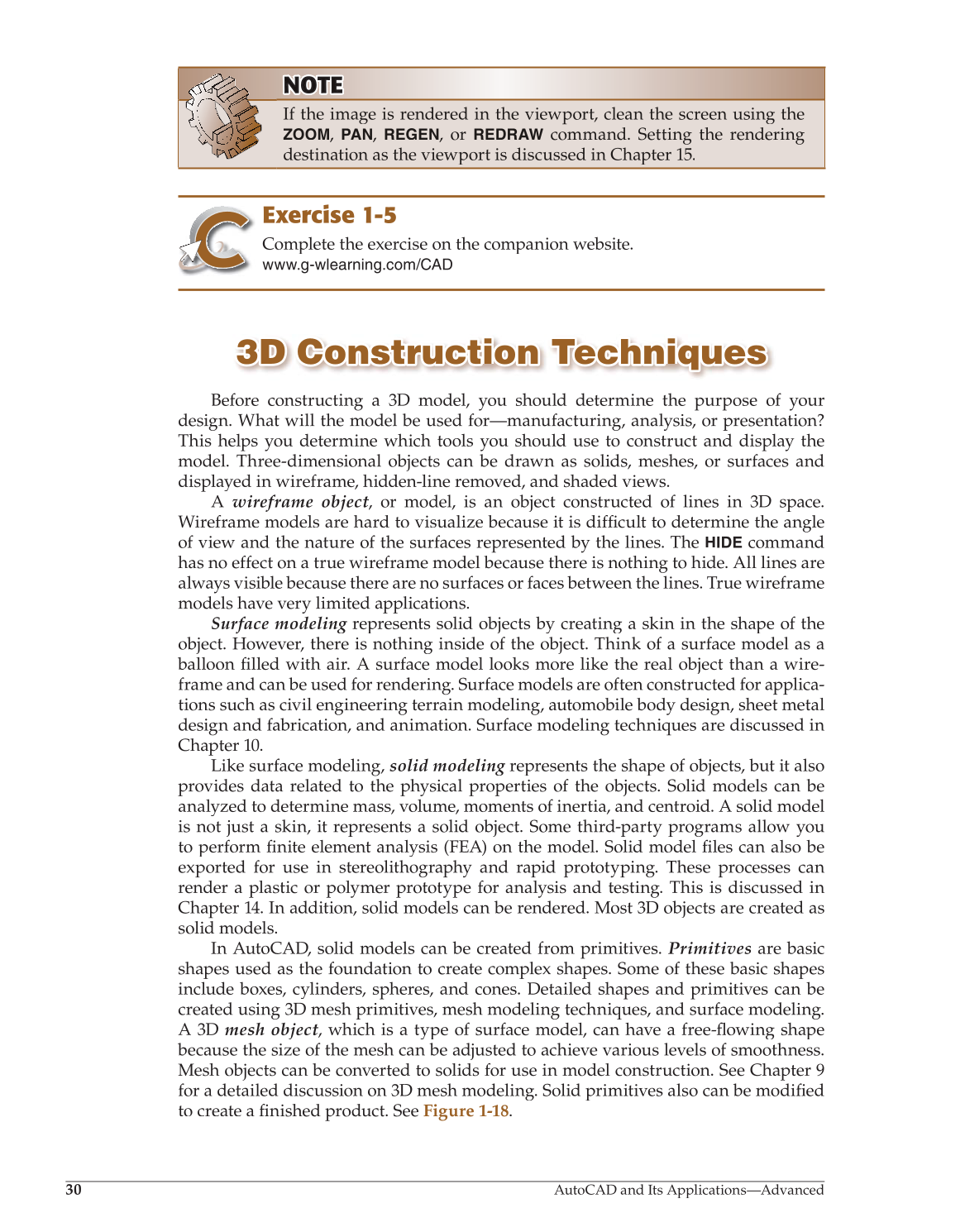30
AutoCAD and Its Applications—Advanced
Exercise 1-5
Complete the exercise on the companion website.
www.g-wlearning.com/CAD
3D Construction Techniques 3D Construction Techniques
Before constructing a 3D model, you should determine the purpose of your
design. What will the model be used for—manufacturing, analysis, or presentation?
This helps you determine which tools you should use to construct and display the
model. Three-dimensional objects can be drawn as solids, meshes, or surfaces and
displayed in wireframe, hidden-line removed, and shaded views.
A wireframe object, or model, is an object constructed of lines in 3D space. t
Wireframe models are hard to visualize because it is diffi to determine the angle ficult
of view and the nature of the surfaces represented by the lines. The
HIDE
command
has no effect on a true wireframe model because there is nothing to hide. All lines are
always visible because there are no surfaces or faces between the lines. True wireframe
models have very limited applications.
Surface modeling represents solid objects by creating a skin in the shape of the g
object. However, there is nothing inside of the object. Think of a surface model as a
balloon filled with air. A surface model looks more like the real object than a wire- fi
frame and can be used for rendering. Surface models are often constructed for applica-
tions such as civil engineering terrain modeling, automobile body design, sheet metal
design and fabrication, and animation. Surface modeling techniques are discussed in
Chapter 10.
Like surface modeling, solid modeling represents the shape of objects, but it also g
provides data related to the physical properties of the objects. Solid models can be
analyzed to determine mass, volume, moments of inertia, and centroid. A solid model
is not just a skin, it represents a solid object. Some third-party programs allow you
to perform finite element analysis (FEA) on the model. Solid model files fi can also be fi
exported for use in stereolithography and rapid prototyping. These processes can
render a plastic or polymer prototype for analysis and testing. This is discussed in
Chapter 14. In addition, solid models can be rendered. Most 3D objects are created as
solid models.
In AutoCAD, solid models can be created from primitives. Primitives are basic
shapes used as the foundation to create complex shapes. Some of these basic shapes
include boxes, cylinders, spheres, and cones. Detailed shapes and primitives can be
created using 3D mesh primitives, mesh modeling techniques, and surface modeling.
A 3D mesh object, which is a type of surface model, can have a free-flowing t shape fl
because the size of the mesh can be adjusted to achieve various levels of smoothness.
Mesh objects can be converted to solids for use in model construction. See Chapter 9
for a detailed discussion on 3D mesh modeling. Solid primitives also can be modifiedfi
to create a fi nished product. See fi Figure 1-18.
NOTE OT TE
If the image is rendered in the viewport, clean the screen using the
ZOOM, PAN, REGEN, or
REDRAW
command. Setting the rendering
destination as the viewport is discussed in Chapter 15.
